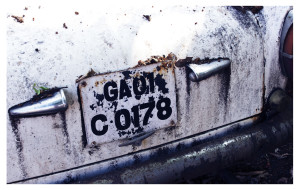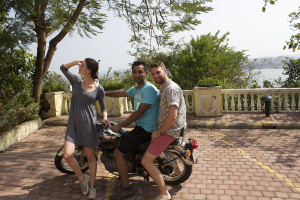 By Kate Wallace, 1/21/2015. Erica is a student at Berkeley and has been in India for the past studying the building of “smart cities.” My first question for her was: what is a smart city? Smart cities are designed to use technology to enhance the lives of its citizens. She has been talking with people in the transportation industry, clean water companies, tech companies who are trying to who implement sensor parking and government organizations. She was commissioned by several cities in the bay area to come to India to learn about what they’re doing here and bring her learnings back to the States. From this angle she says it hasn’t all that helpful but there are “way more problems here than there are in America.”
By Kate Wallace, 1/21/2015. Erica is a student at Berkeley and has been in India for the past studying the building of “smart cities.” My first question for her was: what is a smart city? Smart cities are designed to use technology to enhance the lives of its citizens. She has been talking with people in the transportation industry, clean water companies, tech companies who are trying to who implement sensor parking and government organizations. She was commissioned by several cities in the bay area to come to India to learn about what they’re doing here and bring her learnings back to the States. From this angle she says it hasn’t all that helpful but there are “way more problems here than there are in America.”
The Prime Minister wants to build 100 new cities in India. Erica got the opportunity to visit some of these future cities. She said she could see that some of the design elements benefit local people such. One of the prime example of this is how they aim to readjust the transportation, which is much needed in India. One of the cities uses bike lines and walk lanes, and the rest of street is cars. There were special lanes for buses which helps keep traffic orderly and efficient and therefore helps citizens live easier. Through her travels she has noticed that Freeway design is not done well here at all, to fix this issue in future cities one of the cities commissioned traffic group to build smarter roads. Eric’s describes GIFT city as “basically a show, it felt like Disneyland.” It looked as if they were trying to build a Dubai within India. She said she wonders how this is supposed to benefit native Indian people and feel the designs cater to expats. Looking at the fancy building plans India suddenly literally looked like New York or Dubai. This is hard for me to imagine after have spent time recently walking through old Delhi where there are wires hanging above your head on busy broken down streets.
Mackenzie did research that concluded that Mumbai didn’t have room for banks, so one of these cities is aiming to be a financial hub within India. During this meeting it was mentioned that most of the people working at these banks are foreigners, thus the city is being created to cater to expats. Erica asked how the local people benefit from the city and they said that it will create jobs. Expats will need valets and service people, and local people are being hired to build the city. When Erica took a tour of the city being built she could see workers building tall glass buildings and next to it the slums the construction workers live in. The construction workers were working on fancy expensive buildings and weren’t even given toilets. They had to move to the construction site to be close to work and live in temporary homes with their families. She said it was sad because the kids didn’t seem to be in school and in many cases she saw them working alongside adults, kids operating drills and young girls carting bricks on their heads. The slums were in bad condition and the people didn’t seem to have easy access to basic needs like clean water and sanitary disposable of human waste. Erica said “The building company said they were creating jobs but if they really cared about them wouldn’t they provide temporary housing, education for the kids living on site and health insurance?” This particular smart city is estimated to create 1 million jobs but we must question the quality and the jobs and question if companies are taking the health and safety of their employees seriously.
Erica pointed out another important issue that didn’t get talked about at her meetings. They never mentioned what happened to all the people who used to live on that land. Displacement of people is a huge problem that comes with infrastructure developments like these “smart cities.” People have either been forced from their homes to make room for the buildings or the area will get so expensive due to businesses targeting expats because they have more money that native people will be forced to move out. She said it reminded her of the Beijing Olympics where China spent millions of dollars on building stadiums to show the new and glorious China, but the dark side to this was that all the people who used to live there were displaced and poorer people were left homeless.
Erica believes that before India invests in creating smart cities, they need to invest in providing the basic needs to improve the lives of the general population. Right now there are lots of issues with people burning biomass and contributing to pollution. Since being here she has witnessed the burning of fecal matter, cow dung, plastic bags, and animals to stay warm. There are white bubbles in the water that come from textiles and no waste management system. There is also human and animal feces everywhere. Erica says that there is a lot of room for improvement within India, and perhaps reason they’re not developing at the same pace as China is the gov isn’t prioritizing money where it should go. She believes the government should try to preserve culture and should pour money into its people. This means providing better and more accessible education, clean water for slums and improving infrastructure to benefit the local people. She says they must bridge wealth gap, and then there’s social mobility and then that benefits everyone. Perhaps before India worries about sensor based parking they should make sure their population has access to clean water.
